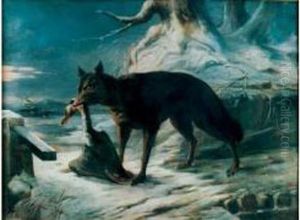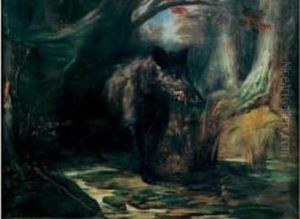Auguste Louis Mathurin Moreau Paintings
Auguste Louis Mathurin Moreau, born in 1834 in Dijon, France, was a distinguished French sculptor, best known for his intricate works in bronze that epitomize the Art Nouveau movement. He hailed from an illustrious family of artists, which played a pivotal role in his artistic development. His father, Jean-Baptiste Moreau, was a painter, and he was the younger brother of the famous sculptors Hippolyte Moreau and Mathurin Moreau, making artistry a family tradition that deeply influenced his career path. Despite the shadow cast by his brothers' success, Auguste managed to carve out a unique niche for himself in the world of sculpture.
Auguste Moreau's artistic journey began at a young age under the tutelage of his father and later, his older brothers. He did not attend the prestigious École des Beaux-Arts, which was common for artists of his time. Instead, he developed his craft through hands-on experience and personal study, which allowed him to cultivate a distinctive style. Moreau's work is characterized by a remarkable attention to detail, dynamic compositions, and themes that often draw on mythology, nature, and the human form, embodying the spirit of Art Nouveau.
Throughout his career, Moreau exhibited his work at various salons and exhibitions, quickly gaining recognition for his talent. His bronzes, often adorned with intricate details and patinas, were sought after by collectors and art enthusiasts of the time. Moreau's sculptures typically feature figures that evoke a sense of movement and emotion, bridging the gap between the real and the mythical.
Auguste Moreau's legacy is that of a master sculptor who played a significant role in the Art Nouveau movement. His works continue to be celebrated for their beauty and craftsmanship, and they can be found in museums and private collections around the world. Moreau passed away in 1917, leaving behind a body of work that continues to inspire and captivate art lovers to this day.

